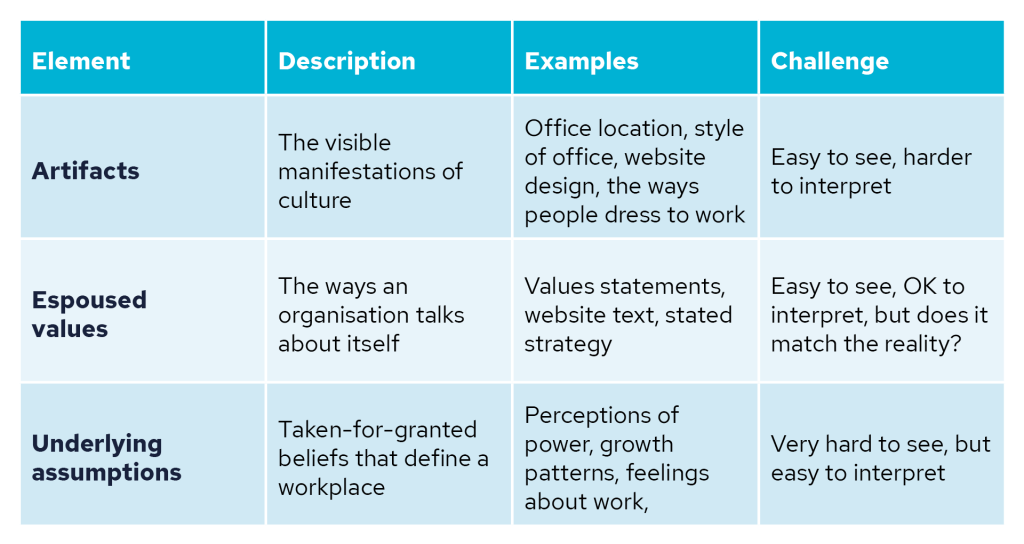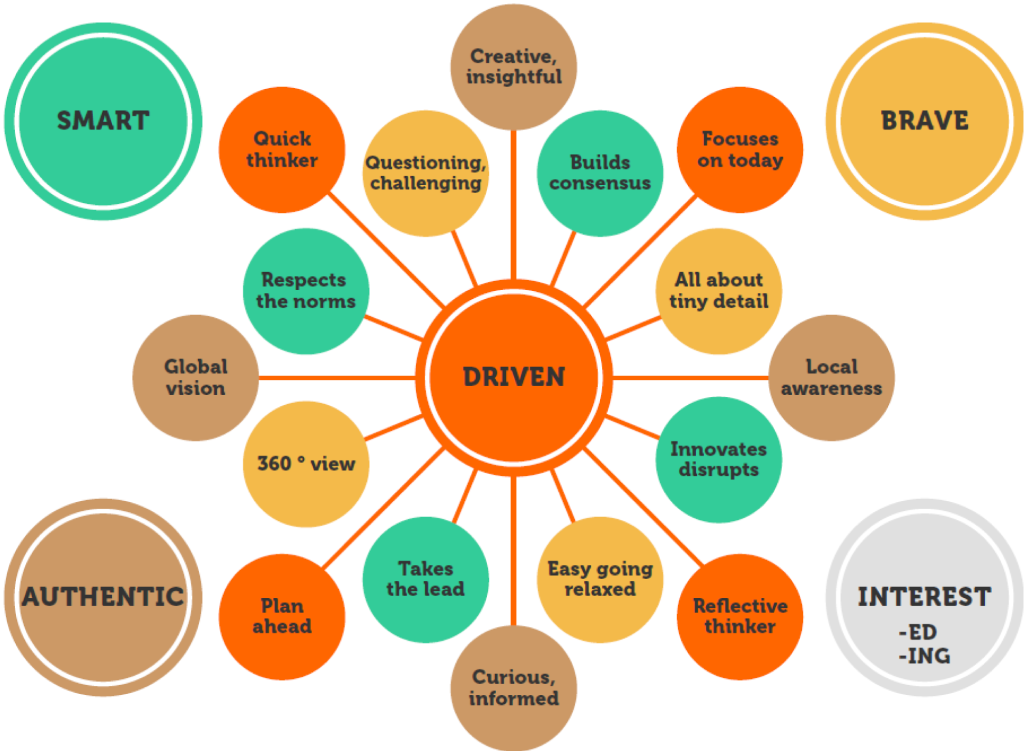The culture of Growth Lending
With culture an integral part of the fabric of Growth Lending, Organisational Psychologist Heather Worsfold reveals exactly how our culture was curated and what it means for the organisation.
Most organisations have a mission or vision statement and a set of values they share. With B2C businesses, these are often linked to brand building. In B2B businesses, they offer a distinction between similar organisations. With a handful of sentences, they can potentially pull huge organisations together under one idea. Business leaders hand down their mission and staff understand the raison d’etre of their leaders.
However, they lack something vital, in that they do not capture how an organisation functions. They do not capture the nuts and bolts of interaction, or tell an employee who is not right at the top of the tree how they can measure their own success. To create unity in a far smaller group, a richer tool is available; organisational culture.
The original mission
I began supporting Growth Lending (then BOOST&Co) in early 2017, not with a mandate to craft a vision, mission, or culture, but to help an eight-person micro-business grow rapidly while preserving the very best of its existing team.
Coming from an HR background, my instinct was to develop a People strategy. However, I quickly realised there was no foundation to build on. I didn’t know the team, and the only person I was familiar with was Lance Mysyrowicz, from our time at McKinsey. Even then, my knowledge of his leadership style was coloured by years-old impressions.
It became clear that to deliver what was needed, I first had to understand the individuals within the team and how they functioned as a collective. What did they value in each other? How did they navigate differences? How did they define and celebrate success?
As I thought more, it struck me: I needed to uncover their organisational culture. The challenge was to figure out how to define it in a way that could support their growth.
Organisational culture for a small business
Embarking on this journey, I encountered the work of a towering figure in Organisational Psychology, Professor Edgar Schein. A pioneer in his field, Schein, who passed away in 2023 at the age of 94, conducted groundbreaking research on organisational culture during the late seventies and eighties. Schein’s work focused on why organisations often fractured during periods of rapid growth, a theme that felt particularly relevant.
In the eighties, businesses were riding a wave of prosperity, generating profits at an unprecedented pace. To capitalise on the moment, many organisations scrambled to hire talent from diverse and unfamiliar sources. Established firms brought in recruits from different backgrounds, challenging their entrenched ways of working. Suddenly, leaders were grappling with internal frictions they had never encountered before. It was easy to assign blame. An Oxbridge-educated firm, for instance, might point fingers at new hires from red-brick universities. However, such oversimplifications failed to address the real issues. The smartest organisations recognised the need to dig deeper, to understand what made expansion so fraught with challenges.
Schein’s definition of organisational culture illuminated the roots of these conflicts. Forty years later, I found myself seeking to sidestep such tensions altogether. His findings and my goals aligned perfectly, so I just needed to make his model into a tool.
Discovering Edgar Schein’s model of organisational culture
What is now also known as Schein’s Iceberg Model, identified three elements of an organisation’s culture:

This model made perfect sense to me as someone who has onboarded countless people over the years; it is the unseen elements that can be the hardest to grasp.
Considering the brief, I realised that to get to everything on this table – especially the last row – I needed to gather a good weight of information to analyse and interpret effectively. To do this, I conducted in-depth interviews with each team member, asking everyone the same set of questions. These included, “How do you know you’ve done a good job?”, “How do you describe BOOST&Co to your family and friends?”, and “What does a really good day at work look like?”
The analysis involved identifying recurring themes and counting the words that cropped up most frequently. Beyond the interviews, I also examined the structure of the team and the hiring patterns up to that point. I analysed a number of “artifacts”, including the company’s website and the pay structure to form a more complete picture. I felt I was finally using my first degree – English Literature and History of Art – to “read” all the information that was available to me.
Depicting the culture:

This was my first attempt. Unsurprisingly, this mid-century Modern sunburst was far too detailed for anyone to work with – me included. The smaller pairs were minutely detailed and balanced each other out. However, the large circles became the “pillars” of the culture, leading to far cleaner depictions in later versions. In fact they aren’t even called “pillars” anymore. They later became “tenets” and now they are “qualities”.
This is Growth Lending’s current expression of the culture – you can perhaps see the beginnings in the first version, but this is both cleaner and richer:

Organisational culture and inclusivity
When I began this work, there was a concern that defining an organisational culture might feel exclusive, as though it created a club where people were either “in” or “out.” Inclusion has always been a passion of mine, not least because I belong to several minority groups myself. I understand that the more diverse a team’s outlook and thought, the better the business outcomes. Varied perspectives contribute to richer, more innovative solutions.
I realised that language can often be the real barrier. The more words we use to define who we are, the greater the risk of unintentionally alienating others. To avoid this, I opted for single words or concise, hyphenated expressions that allow for individual interpretation. I know this approach has succeeded in fostering inclusion, as evidenced by the rich diversity found within the Growth Lending team today.
Ongoing revision
In our culture, we have the flexibility to revise, refine, and even reintroduce elements when needed. Curious is a great example.
At Growth Lending, Curious means asking insightful questions to gain a deeper understanding and foster further knowledge. It’s about ensuring you leave every meeting or briefing with the clarity you need to move forward. It’s about recognising that you can’t always assume you’ve been given all the information – you need to ask questions until you’re satisfied you understand. It’s also about driving your professional growth through an ongoing commitment to curiosity.
Three years ago, I believed Curious was so deeply woven into other Qualities, such as Brave and Engaged, that I removed it as an individual facet of our culture. A year ago, I realised we had slipped back into old habits: people were assuming the information they received was complete. As a result, work segments were going off track because people weren’t asking enough questions. Apathy was taking hold where curiosity should have driven enlightenment.
Reinstating Curious required clear communication. I redefined what it means, why it matters, and reflected on why it had faded in importance. We gave it renewed focus, embedding it into performance appraisals, training sessions, and other touchpoints over six months. Today, Curious is fully restored as a core part of our culture, and the issues we faced have all but disappeared.
Measure of success
An organisation’s culture can be captured in a snapshot, but unlocking its full potential requires ongoing, consistent attention. It should be reinforced at every opportunity and used as a reliable benchmark for decision-making. When things go well, the culture’s strengths can be celebrated. When challenges arise, they provide a chance to reflect, refine, and improve. Over time, nurturing the organisation’s culture becomes second nature, ensuring it remains firmly embedded in the collective consciousness.
We will soon be publishing a separate article on organisational culture change, which is a different matter. My interest in this subject began with several high-profile culture change projects that ultimately failed. In the article, we will explore how culture flows from the top down, negating the ability to “choose” a culture. We’ll then discuss how every moderately successful business has a core culture that can be identified and harnessed positively, even in cases where operations appear dysfunctional or fraught with friction.
Want to know more about organisational culture? Connect with Heather on LinkedIn.





